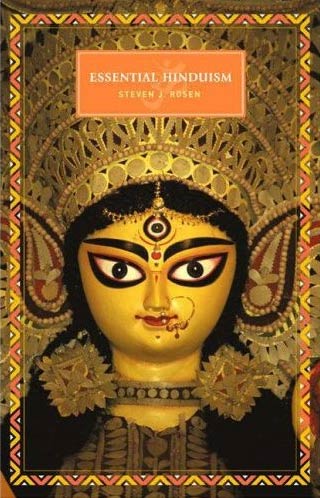Primitive Polytheism or Misunderstood Monotheism?
By David Klinghoffer | May 15, 2008

[Note from Editor: Rowman & Littlefield, a major publisher, has now purchased the rights to Satyaraja’s Book Essential Hinduism and, as soon as this June, will be releasing a mass-market paperback, meaning that the book will be appearing at bookstores around the world.]
In today’s culture war pitting secularism versus religion, Eastern religions usually get a free pass from atheist authors and other foes of faith. But that doesn’t mean that Hindus can afford to rest on their laurels. Several new books from Hindu experts and advocates seek to dispel misconceptions, including negative ones, about the ancient Indian tradition.
Paramacharya Palaniswami, v-p of Himalayan Academy Publications, told RBL that the top challenge an American Hindu will likely face from outsiders is a misunderstanding of the faith as primitive polytheism. It’s partly to aid Hindus in answering such charges that he has brought out What Is Hinduism?, compiled by the editors of Hinduism Today magazine. The book has a first printing of 10,000 in paperback with a further few thousand in hardback.
Palaniswami dismissed “the wrong idea that Hinduism worships multiple gods. If you ever meet a devout Hindu, he worships one God.” Of course, a Hindu recognizes other deities, created by and serving God, seemingly taking a physical form in statues and images displayed in temples.
Which sure sounds like idol-worship. But as Hindu author Steven J. Rosen hastens to clarify, “They are not considered material forms, only apparently material. God’s form is never material. Hindus do not acknowledge a material form as being God’s form.”
Rosen’s book, Essential Hinduism (Praeger), and another new title, John Stratton Hawley’s The Life of Hinduism (Univ. of California), both published in December, address scholars and Hindus who are already up to speed on the religion. By contrast, the audience for What Is Hinduism? includes mainly born-Hindus who “love their heritage but maybe don’t know that much about it,” said Palaniswami.
Rosen notes another misconception: that Hinduism is one “religion” at all. Rather, “It’s an umbrella term for very diverse religions,” including four main branches.
Hindus disagree, among other things, on whether their tradition has direct relevance for non-Hindus. Rosen said “applied spiritual technologies” like yoga can be used by “people with no connection to Hinduism. You don’t have to be a Hindu to benefit from the practices of the Hindu tradition. They are universal practices.”
Palaniswami partly differed on this, commenting on the fact that yoga classes are now so pervasive in American culture that you can find one at any YMCA. “I see a value, but it’s really not a spiritual value.” Casual yoga dabblers are not the intended audience for his book: “They’d have to change their life so much to live up to this. They don’t want to do that.”















